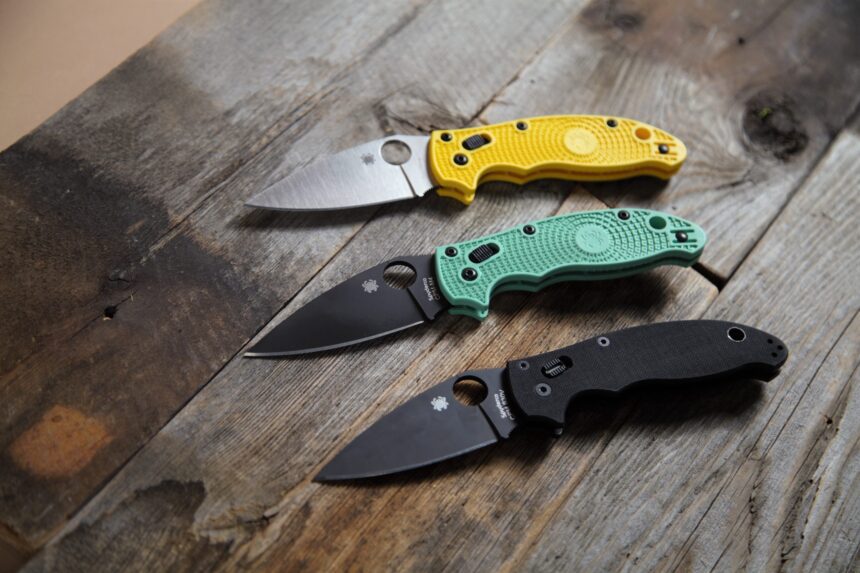
Occasionally, there emerges a knife that breaks away from conventional norms. Rather than sticking to established design principles and mechanisms, it dares to innovate, resulting in something truly exceptional. The Spyderco Manix is one such knife, blending high-quality materials with inventive design to produce a knife that stands out from the rest. Let’s delve into the origins of the Spyderco Manix and explore what makes it so remarkable!
Manix’s History

When a person designs a production knife, it usually follows years of studying knives and industrial design. This typically means that most knife designers are at least in their mid-30s, but there are exceptional cases of younger talents. One such prodigy is Eric Glesser, the son of Spyderco’s founders, Sal and Gail Glesser.
Eric was immersed in the world of Spyderco from a young age, observing his parents manage the company. While he learned the ins and outs of business operations, his true passion lay in knives. He started sketching knife designs at the age of eight, experimented with crafting wooden knives as a teenager, and continued learning from his father well into adulthood. With a degree in industrial design, Eric began designing knives for Spyderco in his early 20s. One of his early creations was the iconic Manix, which has remained a popular choice for decades.
Distinct Features of the Manix

The Manix, in my view, appears to be Eric Glesser’s response to his father’s Native design. It features a slightly straighter edge for easier push cuts, a pronounced finger guard for enhanced safety, and a larger size to provide more grip options. However, the standout feature is its lock mechanism.
Introduced in 2008, the Manix employs a unique version of Spyderco’s Ball Bearing Lock. This innovative lock incorporates a ball bearing wedged between the blade tang and a spacer, offering secure and reliable locking. The Caged Ball Bearing Lock utilized in the Manix optimizes the lock’s efficiency by enclosing the ball bearing within a cage, allowing for a smaller ball bearing size without compromising functionality.

Comparing the Manix’s lock to Benchmade’s AXIS Lock, we observe that while similar in appearance, they vary in design and maintenance. The open crossbar lock, as found in the AXIS Lock, can easily accumulate dust and dirt but is relatively simple to clean. On the other hand, the fully enclosed caged ball bearing lock in the Manix resists debris more effectively but requires more effort to clean.
The Manix stands out as a top choice in the knife industry, maintaining its popularity for nearly two decades. It is a testament to Eric Glesser’s remarkable talent and influence, extending well beyond Spyderco. The Manix is certainly a knife worthy of consideration!
Is the Manix Worth Buying?

In this instance, I am unable to provide reasons against acquiring a Manix. It is truly an exceptional knife, offering durability with full steel liners and a robust locking mechanism. Whether you require a hard-working tool or a reliable everyday cutter, the Manix Lightweight, weighing only 3 ounces, serves both purposes. My admiration for the Manix has kept me from adding it to my collection, fearing it might outshine the others.
Regardless, the Manix remains a remarkable knife that deserves a place in your collection!









